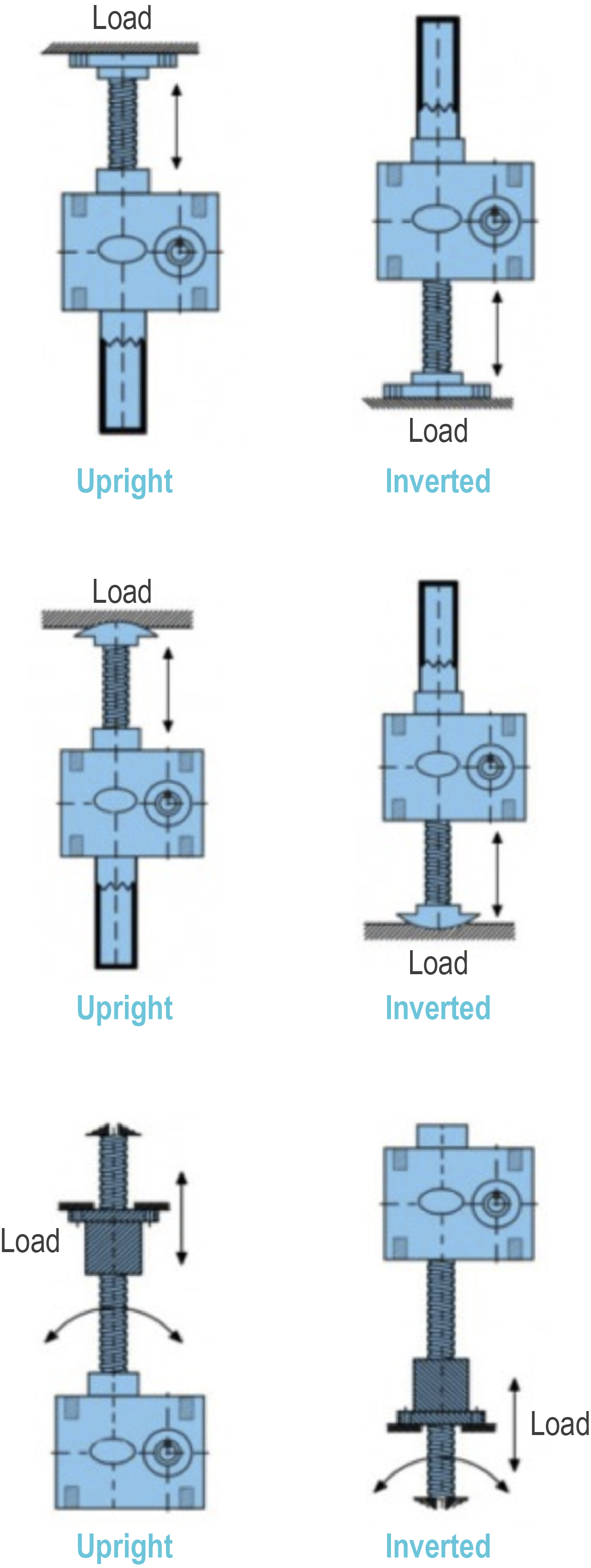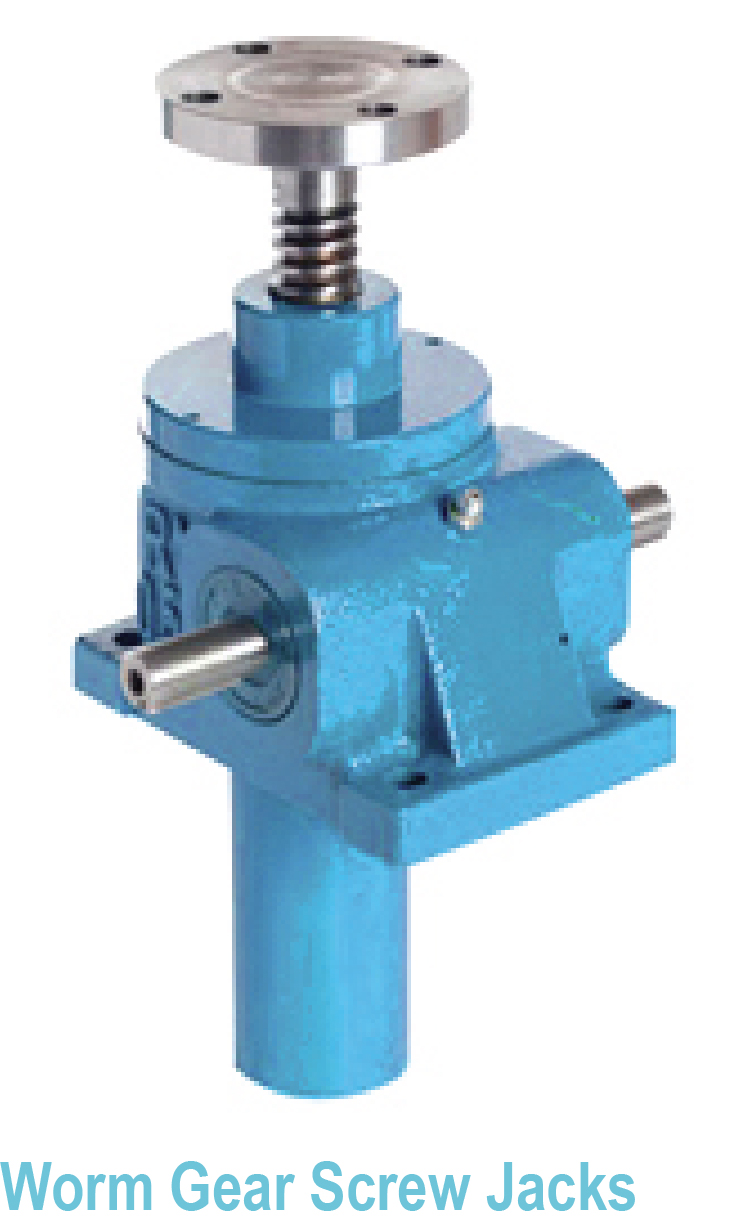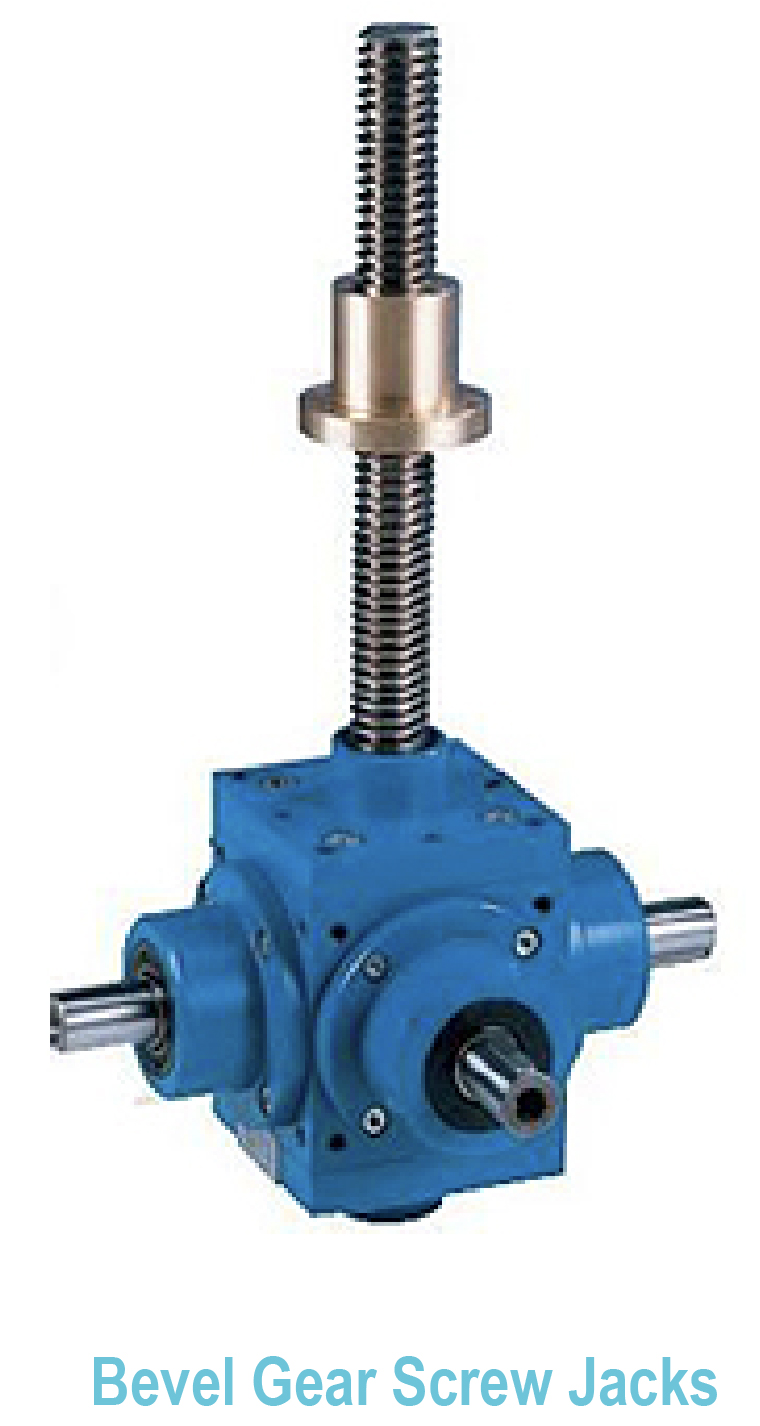How to choose the right jack for your application
When faced with the need to lift, lower, push or pull a load—especially a heavy load—and hold it in the correct position, a screw jack or multiple jack system may provide the best linear motion solution when considering its performance/cost ratio. There are 3 main types of screw jacks: machine/worm gear screw jacks, ball screw jacks, and bevel gear jacks. Within these, there are 3 subcategories related to the mode of operation: Translating, Keyed, and Rotating/Traveling nut. The advantages and disadvantages of each type are given below.
The 3 sub-categories of screw jacks apply to all 3 types of jacks.
|

|
|
Translating jacks
With translating jacks, the screw travels up and down/back and forth through the housing when the input shaft is rotated in one direction or the other. In order for linear motion or “travel” to occur, a load must be applied, or the screw end must be attached to the load by bolting or pinning it to the load.
|
|
Keyed jacks
With keyed screw jacks, a key is positioned along a keyway on the screw, and stabilizes the screw, causing it to travel, with no need to have the end affixed to any given load. This method is commonly used in single jack systems when the load is free standing and may rotate or pivot on the screw end.
|
|
Rotating or traveling nut screw jacks
With rotating or traveling nut screw jacks, the screw does not travel through the housing. It rotates in place while the nut travels up and down the screw in either direction, providing linear motion for the attached load. A load must be affixed to the nut in order for the traveling of the nut to occur.
Applications without the physical space to allow the screw to extend below or above the housing, when fully recessed, may use rotating type jacks. Rotating screw jacks might also be used when it is not possible to fully guide the load, otherwise translating type jacks are most common.
|
|
Which type of screw jack should you choose?
In order to know if a screw jack or screw jack system could be a solution for your application, you will need to consider which type of screw jack to select. There are worm gear screw jacks, bevel gear screw jacks and ball screw jacks, and each has several different options and configurations.
To determine the type of screw jack that is best for your application, you need to consider several factors, including: load, self-locking capabilities, travel rate or travel speed, efficiency, accuracy, duty cycle and price, among others.
|
|
Worm gear screw jacks
The most common jack is the worm gear screw jack, also referred to as machined screw jacks because the acme, or trapezoidal, lead screw is machined. In addition to the low cost and self-locking characteristics, another advantage of worm gear screw jacks, and all screw jacks, is the mechanical advantage achieved through the internal gear ratio resulting in the ability to lift, lower, push or pull a significant load with a relatively small amount of torque on the I/O shaft. Worm gear screw jacks are very good in multiple jack systems, because the torsional deflection of connecting shafts and couplings has little effect on positioning. Under heavy load, worm gear screw jacks are not designed for high use or heavy duty cycle applications. They also suffer from low travel rates or speed and low efficiency. However, the lack of efficiency inherent in worm gearing produces the self-locking benefit associated with worm gear screw jacks.
|

|
|
Ball screw jacks
Ball screw jacks incorporate a ball screw instead of a machined screw and a ball nut, which activates the screw. The advantage of ball screw jacks and the rolling action of their design is greater efficiency, up to 50%, which is much greater than bevel gear jacks and worm gear jacks. Because of their efficiency ball screw jacks can be used in heavier duty cycle applications. They also provide good positional accuracy in high speed applications. One potential disadvantage is that ball screw jacks are not self-locking and will require a brake or motor with enough holding torque to prevent the I/O shaft from back-driving. Another unique feature of ball screw jacks is their ability to incorporate worm gearing or bevel gearing. Bevel gear ball screw jacks have efficiency ratings of about 50%. This option of gearing provides another level of flexibility for all kinds of automated lifting, lowering, pushing or pulling applications that require heavier duties cycles and/or positional accuracy at high speeds. Ball screw jacks are typically at the top of the screw jack pricing spectrum, and they can be a little tricky to maintain. Despite these issues, ball screw jacks might be the best choice for your project.
|

|
|
Bevel gear screw jacks
Bevel gear jacks use the same trapezoidal or acme screws used in machined screw jacks to move the load. In keeping with their name, however, bevel gear jacks use bevel gears inside the housing instead of worm gearing. Bevel gears are more efficient than worm gearing—around 35% compared to 20%—and they have lower ratios that result in higher speeds and travel rates. Typically, bevel gear jacks maintain self-locking characteristics while providing higher travel speeds.
Another benefit of bevel gear jacks is their I/O shaft flexibility. They are available in single shaft, two shaft and three shaft configurations. In two and three shaft configurations the jack offers right angle characteristics with the ability to divide input power or torque, sending it equally in different directions. Flexibility in shaft configuration makes bevel gear jacks ideal for multiple jack configurations and can eliminate the need for stand-alone right angle gearboxes used in many worm gear jack systems.
Bevel gear jacks are well suited for light and moderate duty cycle applications and they are priced slightly above worm gear or machined screw jacks because of their greater efficiency, flexibility and speed characteristics. While a bit more expensive, bevel gear jacks reduce the number of required components in multiple jack systems, which helps balance the difference in price.
|

|
Configurations and accessories
Screw jack housings can either be a foot-mounted cast, most common in the US, or the housings can be cubic—machined on all six sides—offering more flexibility in mounting. Screw jacks can be used individually, manually operated, or motorized, or in systems up to eight screw jacks or more, all driven in unison by a common motor or gearmotor. Each screw jack is available with a number of variations, including travel distance, ratio, I/O shaft configuration, motor flange option, end of screw options (Top Plate, Threaded, Plain, Forked, Clevis), protective tube and protective bellows.
We’ve just scratched the surface regarding differences between worm gear screw jacks, bevel gear jacks and ball screw jacks, and what makes each uniquely qualified for a particular linear motion application. If you have a potential project and would like to learn more about screw jacks, and which type of jack or screw jack system might work best for your needs, we invite you to contact Candy Controls today. Happy heavy lifting!
 Candy Controls
Candy Controls



